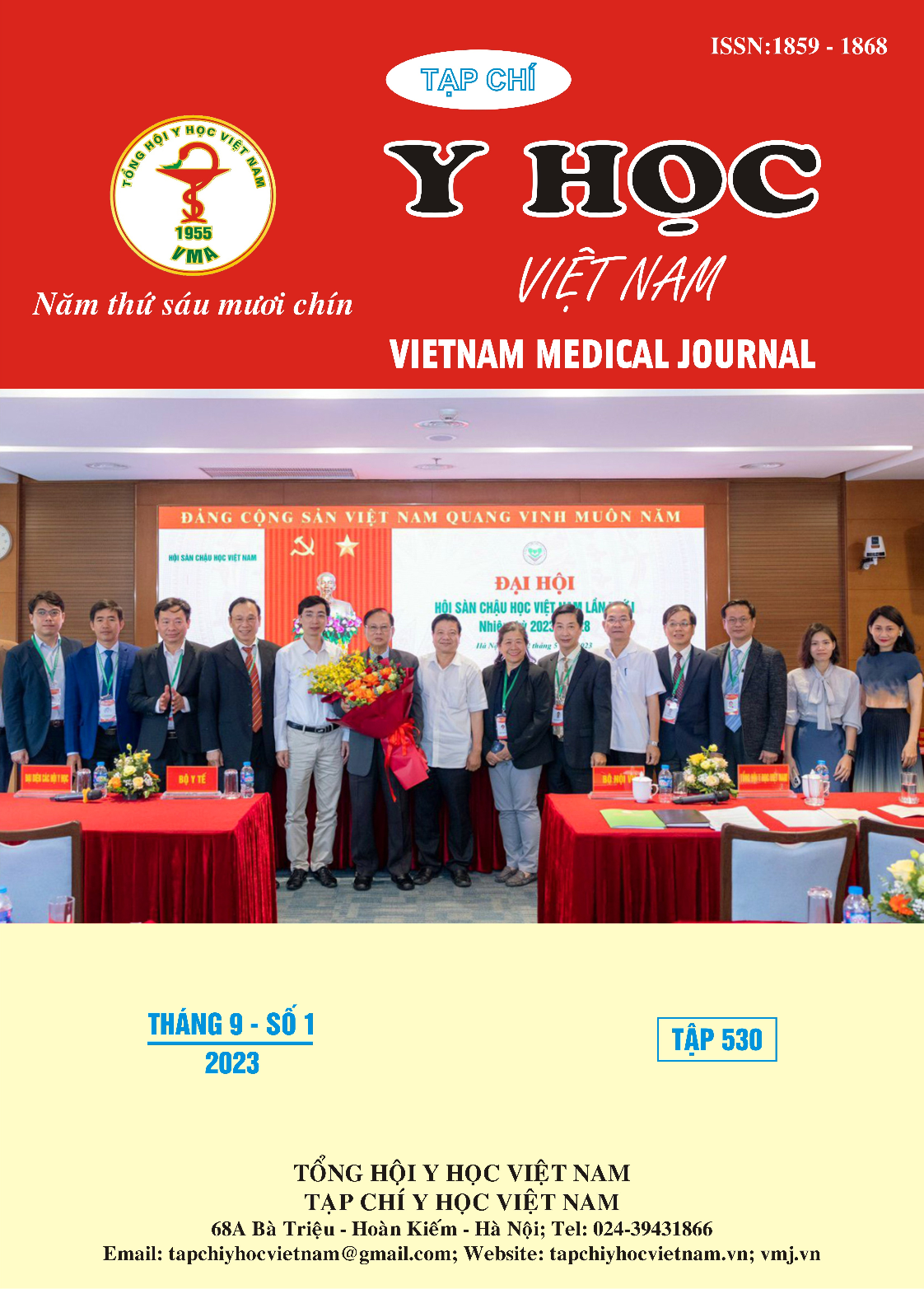EVALUATION OF THE ANATOMICAL RELATIONSHIP OF THE OPTIC NERVE CANAL WITH THE POSTERIOR PARANASAL SINUSES ON MULTI-SLICE COMPUTED TOMOGRAPHY IN THE PRE-ENDOSCOPIC SINUS SURGERY PATIENTS
Main Article Content
Abstract
Purposes: To evaluate the anatomical relationships between the optic nerve canal and the posterior paranasal sinuses by multi-slice computed tomography (MSCT) of the sinuses in patient pre-endoscopic sinus surgery at the Hanoi Medical University Hospital. Material and methods: A cross-sectional descriptive study was conducted on 149 patients (75 women, 74 men) pre-endoscopic sinus surgery, who underwent MSCT without intravenous contrast to assess the anatomical relationship between optic nerve canal with posterior paranasal sinuses. The relationship between the optic canal and the posterior paranasal sinuses was assessed using the Delano classification criteria. Results: The mean age of the group of patients was 46.6±15, the lowest age was 8, the highest was 77. The most common type of optic nerve canal involvement with the posterior paranasal sinuses according to Delano's classification was the type I (accounting for 78.6%) followed by type II and type III (10.7%), not seeing type IV. There were no statistically significant differences in age or sex for each type of optic nerve involvement. Conclusion: The relationship between the optic nerve canal and the posterior paranasal sinuses needs to be fully in consensus to avoid serious damage to the optic nerve in endoscopic sinus surgery.
Article Details
Keywords
posterior paranasal sinus, multi-slice computed tomography, optic nerve
References
2. Van Cauwenberge P, Sys L, De Belder T, Watelet JB. Anatomy and physiology of the nose and the paranasal sinuses. Immunol Allergy Clin North Am. 2004;24:1–17.
3. Bolger WE. Anatomy of the Paranasal Sinuses. In: Kennedy DW, Bolger WE, Zinreich J. Diseases of the sinuses, Diagnosis and Management. B.C. Decker, 2001.
4. Kantarci M, Karasen RM, Alper F, Onbas O, Okur A, Karaman A. Remarkable anatomic variations in paranasal sinus region and their clinical importance. Eur J Radiol. 2004;50:296–302.
5. Badia L, Lund VJ, Wei W, Ho WK. Ethnic variation in sinonasal anatomy on CT-scanning. Rhinology.2005;43:210–214.
6. Cumberworth VL, Sudderick RM, Mackay IS. Major complications of functional endoscopic sinus surgery. Clin Otolaryngol Allied Sci. 1994;19:248–253.
7. DeLano MC, Fun FY, Zinreich SJ. Relationship of the optic nerve to the posterior paranasal sinuses: a CT anatomic study. AJNR Am J Neuroradiol. 1996;17:669–675.
8. Haider Najim Al-Tameemi and Haider Abdul Kadum Hassan. Anatomical relationship of optic nerve canal to the posterior paranasal sinuses on computerized tomography in Iraqi patients. J Contemp Med Sci, Vol. 4, No. 3, Summer 2018: 153–157
9. Spaci T, Derin E, Almaç S, Cumali R, Saydam B, Karavuş M. The relationship between the sphenoid and the posterior ethmoid sinuses and the optic nerves in Turkish patients. Rhinology.2004;42:30–34.
10. Hewaidi G, Omami G. Anatomic variation of sphenoid sinus and related structures in Libyan population: CT scan study. Libyan J Med. 2008;3: 128–133.


